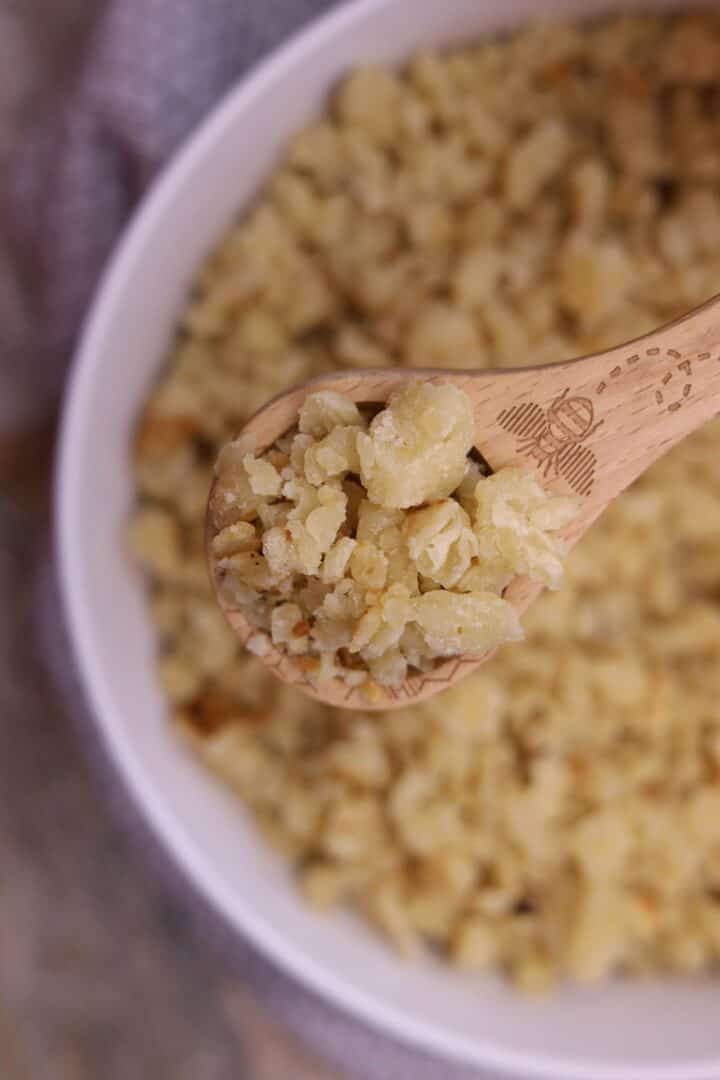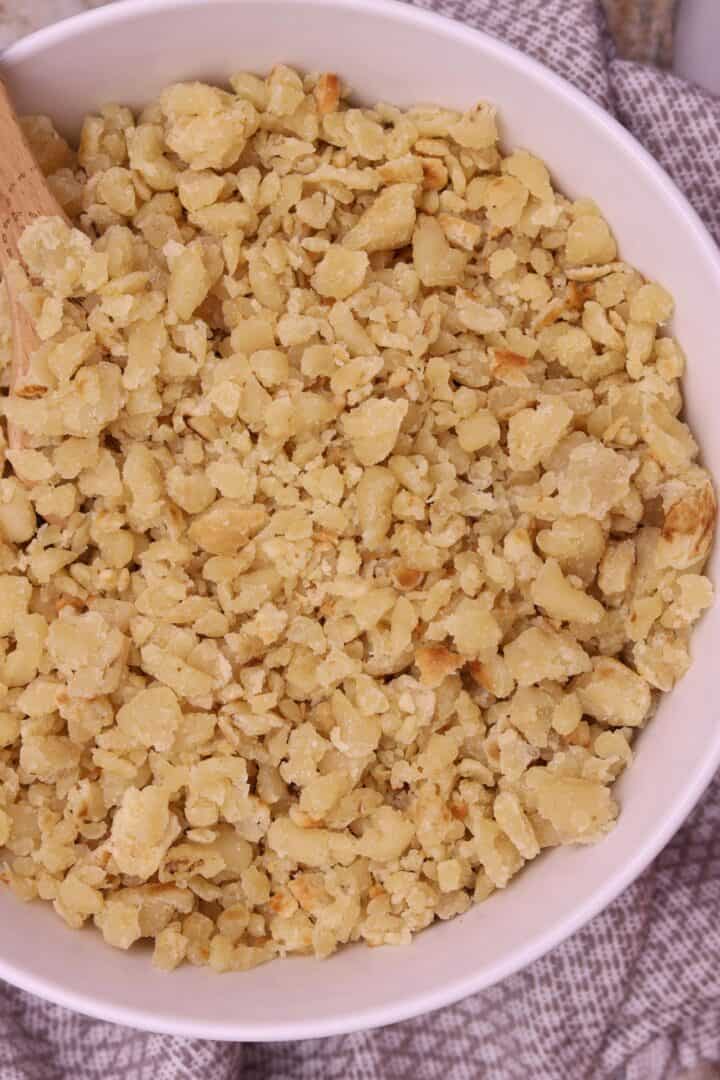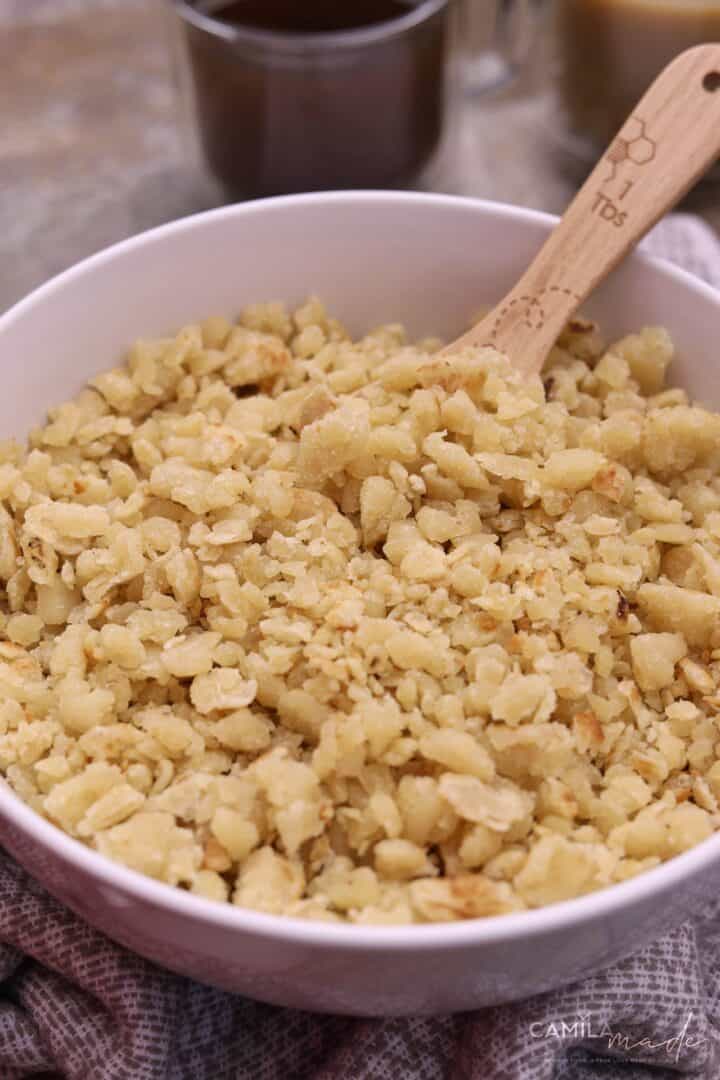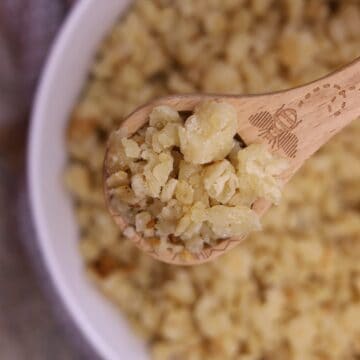Reviro is a beloved traditional dish from Alto Paraná, one of the 17 departments of Paraguay. This humble yet delicious crumbly fried dough can be savored by itself or sprinkled with sugar for a touch of sweetness. In our family, Reviro is a favorite.
For breakfast, we often pair it with Cocido Quemado, a traditional Paraguayan drink made from yerba mate.
At lunchtime, it goes great with Bife Kyogua, a Paraguayan meat stew topped off with egg on top. While making Reviro is simple to make, it does require effort as you need to work the dough until it becomes crumbly. But trust me; the results are well worth the elbow grease.
My approach to making Reviro is a nod to my grandmother's methods. Childhood memories of her making this dish are dear to me. Today, I'm delighted to share my Reviro recipe with you. I hope it brings you as much happiness as it has to my family!
How to Make Reviro
Note: The full instructions are provided in the recipe card below.
In a large bowl, whisk together the flour and salt until they are well combined. Create a well in the center of the flour mixture. Into this well, pour 4 tablespoons of oil, followed by the beaten egg.
Gradually add water while stirring continuously with a wooden spoon. Continue this process until you achieve a dough that is wet, stretchy, and sticky.
Next, in a large Dutch oven or a heavy-duty stainless steel pot, heat the remaining tablespoon of oil over medium heat. Make sure the oil gets hot, but avoid letting it reach its smoking point.
Carefully place the dough into the hot oil. Allow it to fry without moving it until the bottom becomes golden, a process that might take several minutes. Once the bottom is golden, flip the dough to cook the other side until golden.
Using a wooden spoon, begin breaking apart the dough, hitting and stirring continuously until it crumbles. Lower the heat and persistently work on the dough until it disintegrates into small, crispy, golden-brown crumbs.
Once the dough is fully crumbled and has a golden hue, remove it from the heat and let it cool slightly before serving.
See More Paraguayan Recipes:
Recipe
Easy Reviro Paraguayo
Tools
- Large Dutch Oven or heavy Pot
Ingredients
- 500 gr. All-purpose Flour.
- 1 large egg , lightly beaten
- ¾ cup water
- ¾ cup whole milk or water
- 2-½ teaspoons kosher salt , adjust to taste
- 8 Tablespoons sunflower oil or any neutral flavored oil , divided
Instructions
- In a large bowl, whisk together the flour and salt until they are well combined. Create a well in the center of the flour mixture. Into this well, pour 4 tablespoons of oil, followed by the beaten egg. Gradually add water while stirring continuously with a wooden spoon. Continue this process until you achieve a dough that is wet, stretchy, and sticky.
- Next, in a large Dutch oven or a heavy-duty stainless steel pot, heat the remaining tablespoon of oil over medium heat. Make sure the oil gets hot, but avoid letting it reach its smoking point. Carefully place the dough into the hot oil. Allow it to fry without moving it until the bottom becomes golden, a process that might take several minutes. Once the bottom is golden, flip the dough to cook the other side until golden.
- Using a wooden spoon, begin breaking apart the dough, hitting and stirring continuously until it starts to crumble. Lower the heat and persistently work on the dough until it disintegrates into small, crispy, golden-brown crumbs. Once the dough is fully crumbled and has a golden hue, remove it from the heat and let it cool slightly before serving.
Notes
All nutritional information is based on third-party calculations and is only an estimate. Each recipe and nutritional value will vary depending on the brands you use, measuring methods, and portion sizes per household.

